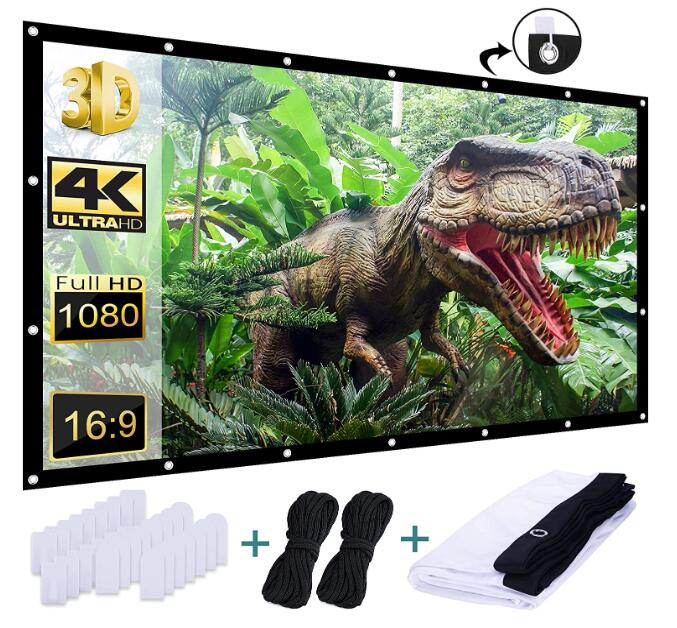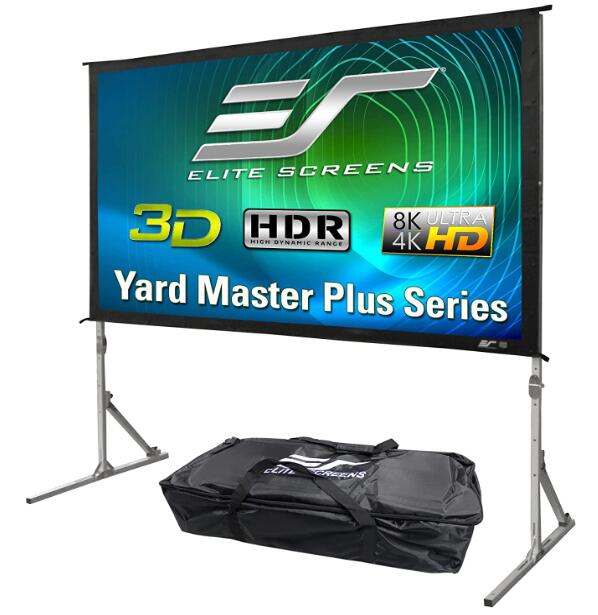A home theater is an investment, and the right projector screen can enhance your viewing experience. When you’re in the market for a new projector screen, you’ll likely come across two main types: fixed and motorized screens. Both have their advantages, but which one is the better option for you? In this article, we’ll discuss the differences between fixed and motorized projector screens, the pros and cons of each, and provide guidance on choosing the right screen for your home theater.
Contents
Fixed Projector Screens

Fixed projector screens are permanently mounted to a wall or other structure. They are designed to provide a clean, flat surface for projecting images, and are often used in dedicated home theaters. Here are some advantages and disadvantages of fixed projector screens:
Advantages
Image Quality: Fixed projector screens offer superior image quality compared to motorized screens. They are taut and flat, which ensures that images are displayed without any distortions or wrinkles. This is particularly important for high-definition and 4K projectors, where image quality is critical.
Durability: Fixed screens are more durable than motorized screens, as they don’t have any moving parts that can wear out or break. With proper care and maintenance, a fixed screen can last for many years.
Cost: Fixed screens are generally less expensive than motorized screens, making them a more budget-friendly option for many homeowners.
Disadvantages
Lack of Flexibility: Fixed screens are permanently mounted, so they cannot be easily moved or adjusted. This can be a drawback if you want to rearrange your home theater setup or if your projector needs to be moved for any reason.
Aesthetic Considerations: A fixed screen is always visible, even when not in use. If you’re concerned about the appearance of your home theater space, a fixed screen may not be the best choice.
Motorized Projector Screens

Motorized projector screens can be raised and lowered using a motor, making them a more versatile option for many home theater setups. They can be ceiling-mounted, wall-mounted, or even recessed into a custom-built enclosure. Here are some advantages and disadvantages of motorized projector screens:
Advantages
Flexibility: Motorized screens can be raised or lowered as needed, giving you the flexibility to adjust your home theater setup as desired. This can be particularly useful if you want to use the space for other purposes, such as hosting parties or watching sports events.
Aesthetic Appeal: When not in use, a motorized screen can be hidden away, maintaining a clean and uncluttered appearance in your home theater.
Ease of Use: With a motorized screen, you can easily raise or lower the screen with the touch of a button, making it more convenient to use than a fixed screen.
Disadvantages
Image Quality: Motorized screens may not provide the same level of image quality as fixed screens. They can be subject to wrinkles or waves, which can affect the image quality. However, high-quality tensioned motorized screens can minimize these issues.
Durability: Motorized screens have moving parts, which can wear out or break over time. However, if you invest in a high-quality motorized screen and maintain it properly, it can still last for many years.
Cost: Motorized screens are generally more expensive than fixed screens, so if you’re working with a tight budget, they may not be the best choice.
Choosing the Right Projector Screen
Now that you know the pros and cons of fixed and motorized projector screens, how do you decide which one is the best option for your home theater? Here are some factors to consider:
- Budget: Determine your budget for a projector screen. If you’re trying to save money, a fixed screen may be the better option.
- Usage: Consider how often you’ll be using your projector screen and for what purposes. If you plan to use it frequently and for multiple purposes, a motorized screen may offer more flexibility.
- Space: Assess the space where your projector screen will be installed. If you have a dedicated home theater room with ample space, a fixed screen may be more suitable. However, if you have limited space or want to use the room for other purposes, a motorized screen can be a better choice.
- Aesthetic Preferences: Consider your personal preferences for the appearance of your home theater. If you prefer a clean, uncluttered look when the screen is not in use, a motorized screen may be the better option.
- Image Quality: If image quality is your top priority, a fixed screen will generally provide better results than a motorized screen.
Conclusion
Overall, both fixed and motorized projector screens have their advantages and disadvantages, and the best choice depends on your specific needs, preferences, andbudget. A fixed screen is ideal for those who prioritize image quality, durability, and cost-effectiveness, while a motorized screen offers flexibility, aesthetic appeal, and ease of use. By considering the factors discussed in this article, you can make an informed decision about which type of projector screen is the best fit for your home theater setup. Ultimately, the right projector screen can greatly enhance your viewing experience, providing a crisp, clear image that makes movie nights, gaming sessions, and other entertainment activities more enjoyable and immersive.